RosCanSat or “satellite” in an aluminum can in Russian
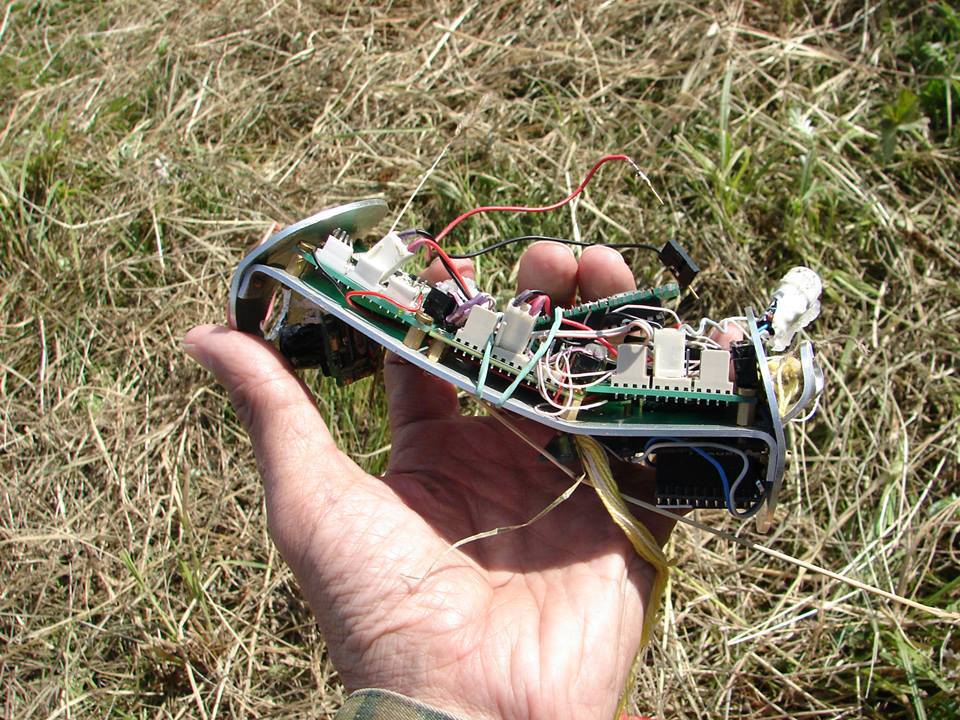
The III Russian CanSat Championship, which took place in the Taldom district in early July, was successfully completed.
CanSat is a working model of a microsatellite weighing up to 350 grams. All the main elements of the “satellite” should fit in a 0.5 liter can. The “satellite” is launched by a rocket or dropped from a helicopter from a height of 1–2 km and, during a smooth descent by parachute, transmits useful information.
So all official messages about the last event begin. A reader who is familiar with the CanSat format has a question: “Stop! And why 0.5, and not 0.33? ”, The reader is not familiar with the format CanSat the question:“ What is it? ”, As well as“ What is the use of the satellite model and such a small height? ”And others are the same associations.
')
I was fortunate enough to be on the jury of this contest, and under the cut, I’ll tell you what is the difference between CanSat’s Russian and its American ancestor.
Dauria strongly supports any space undertakings, including sponsoring KanSat competitions in Russia . There is still nothing written about this movement on Habré, there are only a few references, and I decided to fill this gap.

What is KanSat? You can consider it as a movement, you can look narrowly, then this is the very model of a microsatellite weighing up to 350 g. I see it as a movement designed to simulate the actual production of a spacecraft. Starting in 1999, with the support of NASA, it was initially aimed at students of specialized universities, so that they would go through all the stages of production of a spacecraft in tangible terms, and see the immediate result. The scientific and technical challenge in this case was not in a battle with the adverse effects of cold space, but in miniaturization. The device must fit into the dimensions of an aluminum can of 0.33 liters.
But in Russia they went the other way, the weight remained the same, but the height was increased to a height of 0.5 l. In consequence of this, “our” Kansat is not yet integrated into the world community. But as the number of teams grows, I’m sure there will be a scoring group in the “classic” format. The second more important difference is the target audience. RosKanSat is aimed primarily at schoolchildren, the youngest participants in the past competition were in the 6th grade!
In world practice, competitions are divided into several classes. This is a “classic” KanSat, a jar is poured onto a rocket and it must transmit telemetry in an uncontrollable descent. There is a class with controlled descent, the device should return to the place of launch. There are launches to a height much greater than 1-2 km - into the stratosphere. But in Russia, only the “classic” version is being held; this is called the regular league. However, there were several commands that attempted to implement a controlled launch.
Mandatory program KanSat, this telemetry indicators of the pressure sensor and temperature. And additional features depend on the wishes of the team. What is interesting can be made from such a "jar"? Apart from the invaluable experience in designing and manufacturing a complex system, as well as programming, working with a radio program, the options for additional payload were very diverse.
The team that won the regular league Rara Avis installed a set of sensors for monitoring the weather on its QS: a humidity sensor, an additional temperature sensor.

The second place team, the ISS-17, without deviating from the task, simply duplicated all the main sensors, and also took care of the thermal insulation.
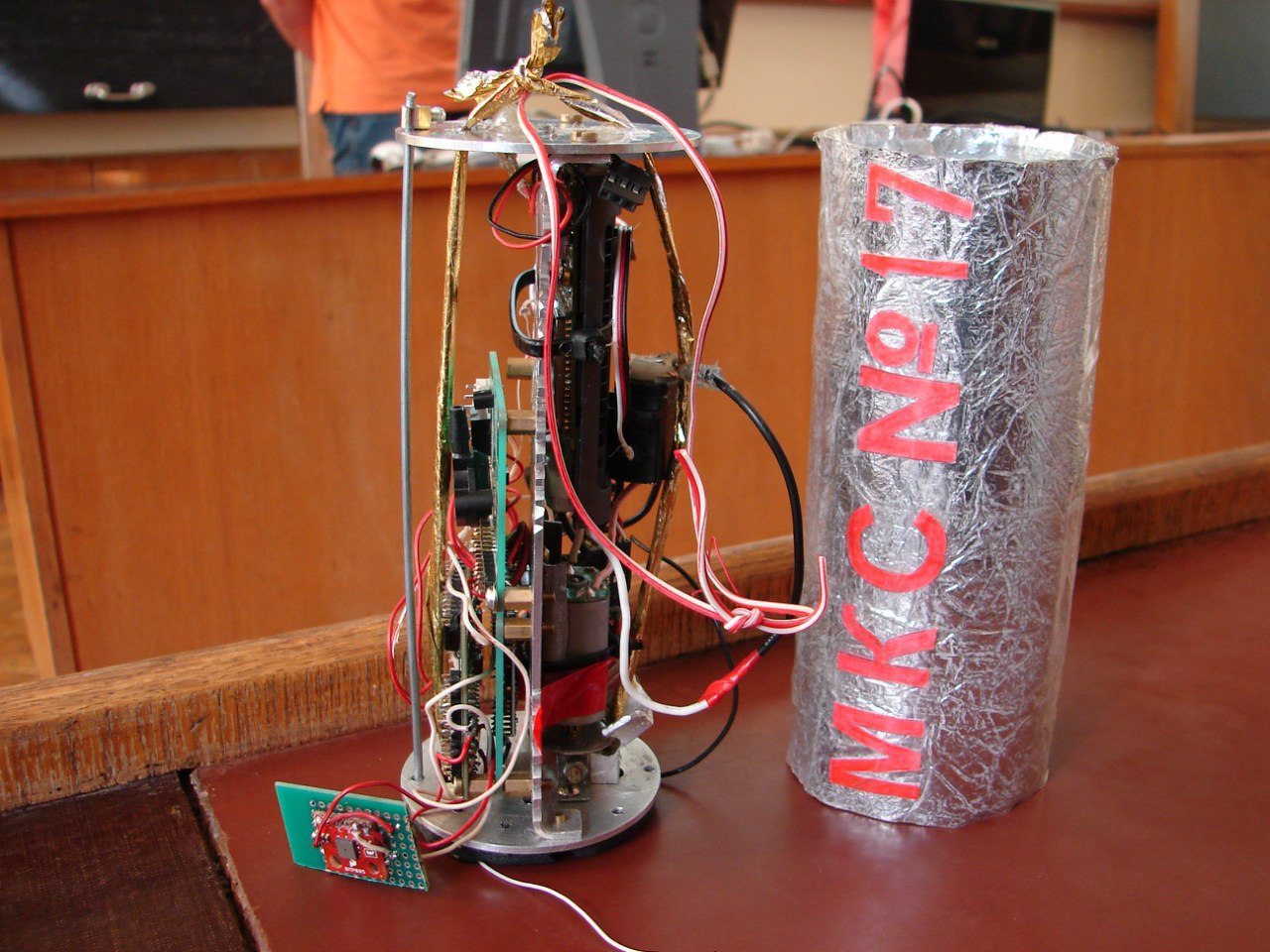
The third important distinction of RosCanSat from its world peers, apart from the dimensions of the devices and the target audience, is the presence of the Higher League. Strictly speaking, it is no longer Kansat, there is no smell of soda jars here. The format is much closer to the KubSat. Mon weight - 1 kg. And the payload itself, as well as tasks, is much more interesting. Mandatory program of the Higher League - telemetry, determining the position of the device in flight according to the readings of the magnetometer, and the delayed response of the rescue system at an altitude of 200-400 m.
Winners - Belarusian team.

And their device with an IR camera.
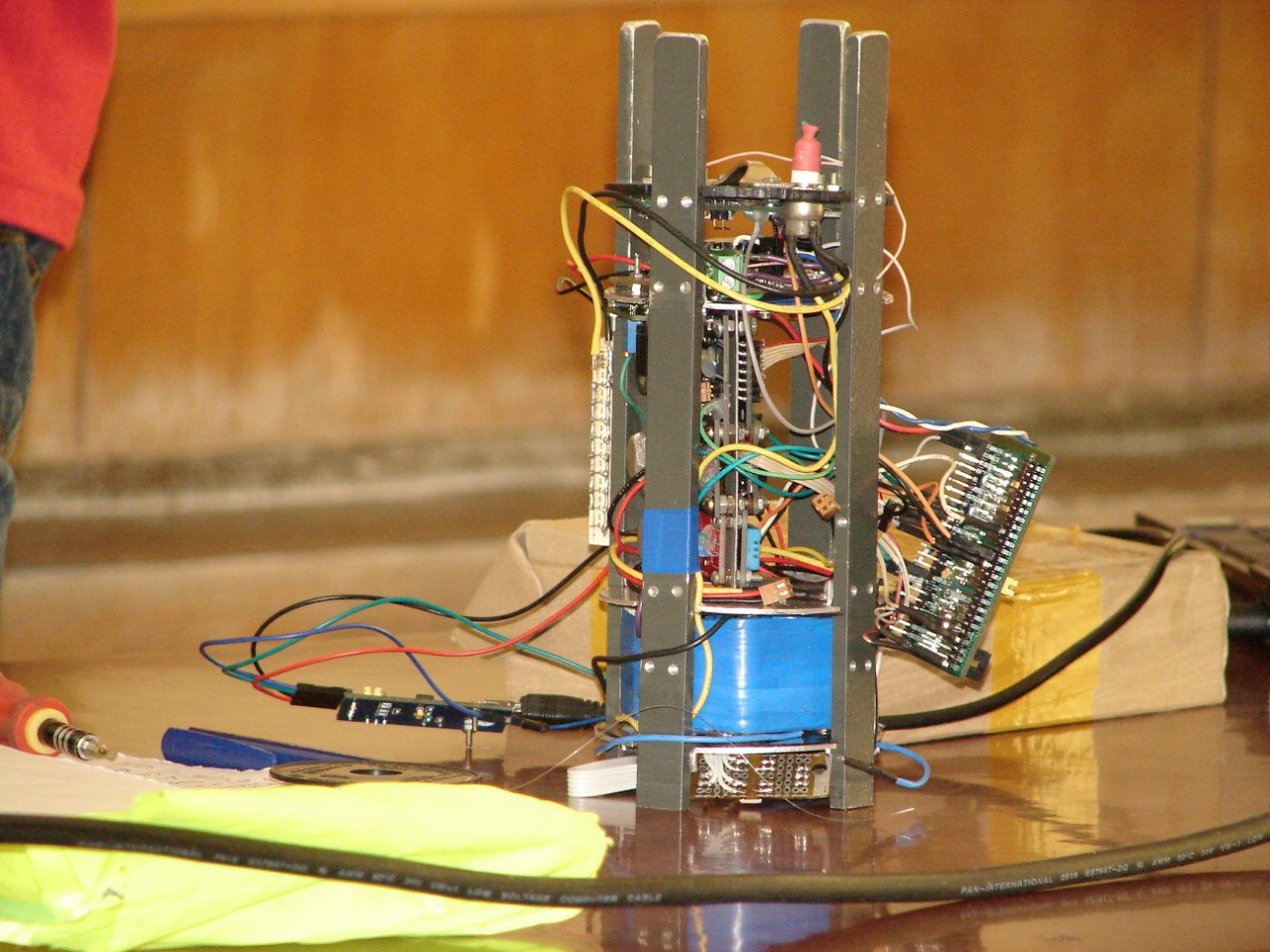
The guys took pictures in the IR range, as well as highlighted the red range from the visible. And based on this data, NDVI was calculated for the launch site! It turned out, of course, no, not N DVI, because Nobody was engaged in rationing. But the results are still impressive.
There were in the Higher League and projects of non-standard systems of decline. Usually - this is a parachute. But the Gagarin-M team had an absolutely fantastic reduction project with the help of an impeller. Unfortunately, the insufficient study of the project did not allow for flight tests.

The runner-up team, “Galaxy,” said a soft landing, but unfortunately, the peeling thread did not work due to the incoming air flow. And the device flopped without any parachutes, but it turned out to be safe and sound!

Unfortunately, not all participants from the regular league had a soft landing. On photo photo team “Rokot.” He is at the beginning of the article.
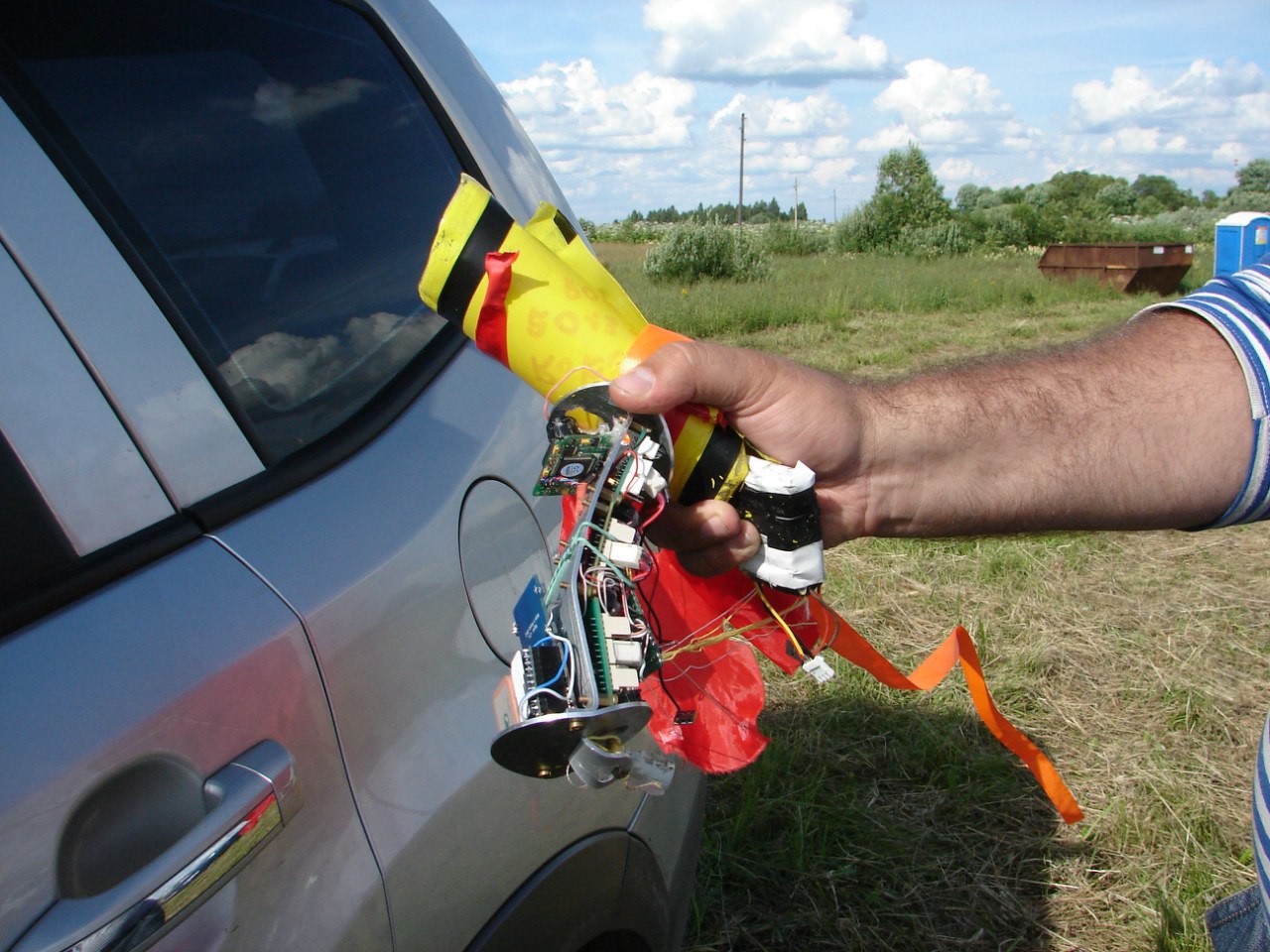
Starting this year, the competitions received informational support from Roskosmos (And in the future, the Roskosmos logo can be used in the RosCanSat logo), so I hope the movement will develop. I know that on Habré there are many people who care about the education of schoolchildren who organize various radio circles. For them, the participation of their wards in such competitions can be a good goal!
Lastly, a few more pictures from the "fields".
Field Mission Control. And the flight director is Nikolay Nikolayevich Vedenkin - Project Management Director for the Moscow branch of Dauria.
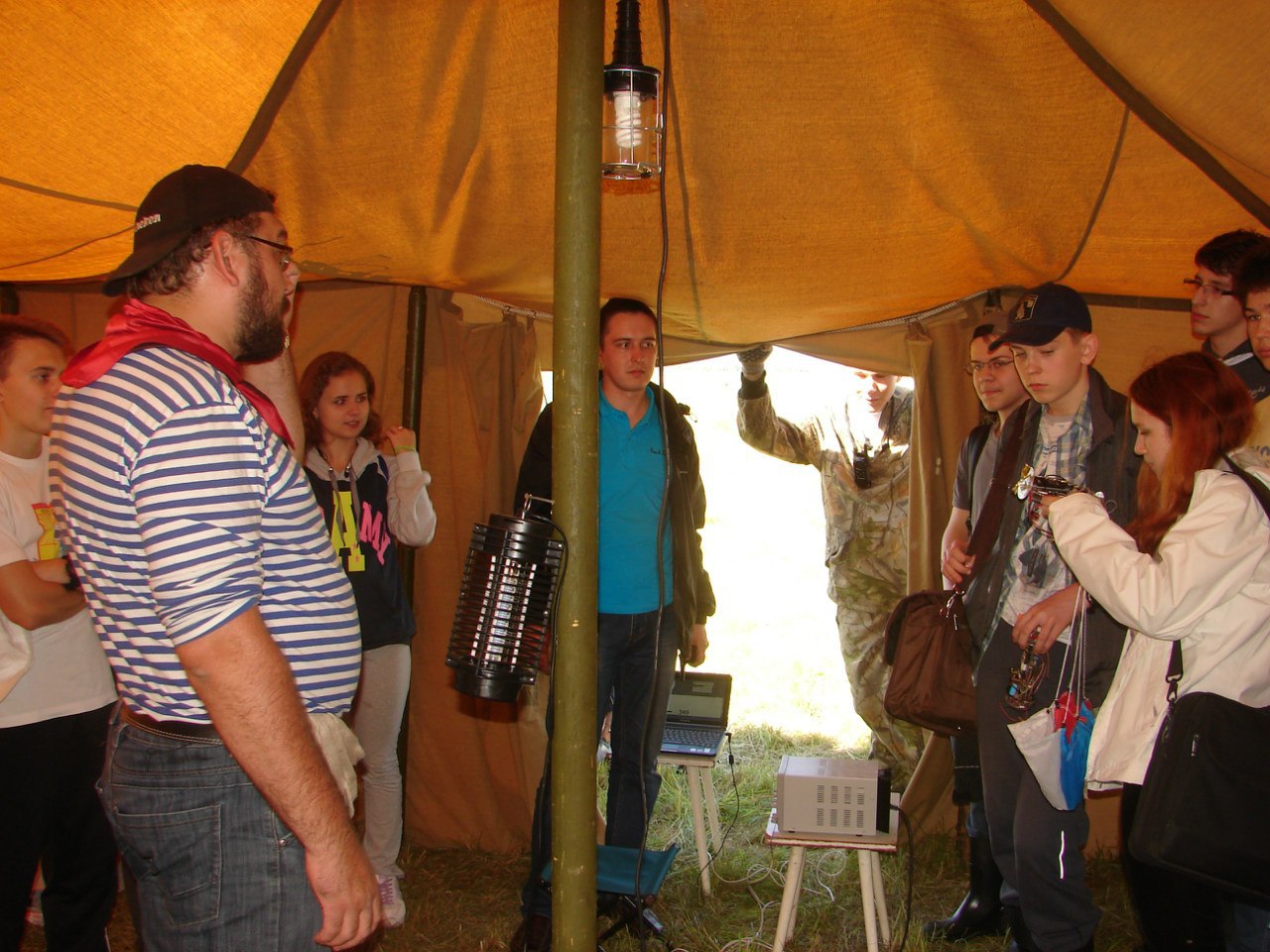
Start preparation.

Unfortunately, not all starts were successful.
And since failed to establish trouble-free launches of heavy VL apparatuses, so they were thrown from the hexocopter.
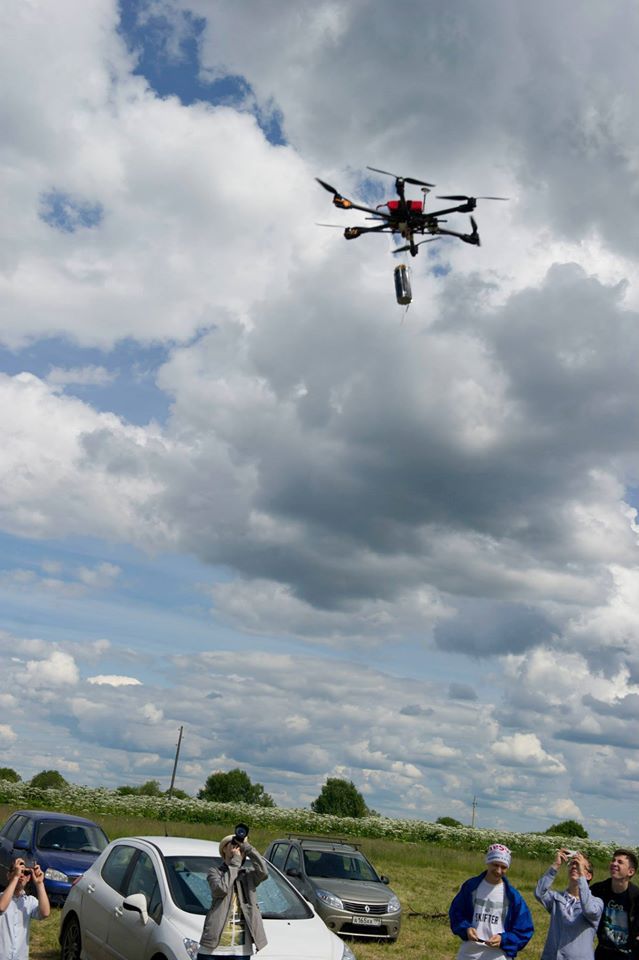
On this I would like to finish my story. I will be happy to answer questions in the comments. Sorry for some confusion, the Chukchi is not a writer. I hope that the topic will be interesting for the habrasoobshchestvu, and perhaps over time will get its own hub. I would like this movement to develop.
PS
The organizers asked to add contacts.
Official website: roscansat.com
Group in VK: vk.com/cansat_russia
Group in FAcebook: www.facebook.com/groups/cansatrussia
Source: https://habr.com/ru/post/229357/
All Articles